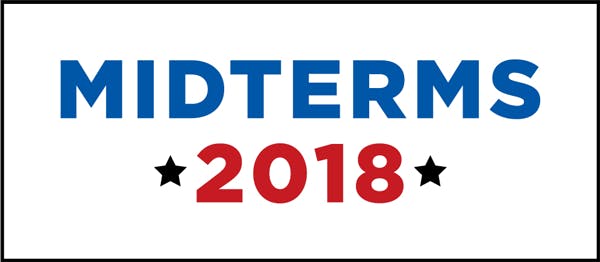On August 24, the tenants of two buildings near the Hollywood Forever Cemetery in Los Angeles received letters from their landlord notifying them of a rent increase of over $800 a month. The increase was not a result of repairs or tax increases but rather, the letter said, of the upcoming election in November.
The section of the ballot in question is Proposition 10, which, if it passes, would repeal a 1995 state law prohibiting local governments from enacting rent control on apartments and homes built after that year (or even earlier in cities like Los Angeles and San Francisco). According to the letter: “Although you don’t want higher rent and we did not plan on charging you higher rent, we may lose our ability to raise rents in the future. ... Therefore, in preparation for the passage of this ballot initiative we must pass along a rent increase today.” If the ballot initiative failed, however, the landlord, Rampart Property Management, promised to “revisit the rent increase with a desire to cancel it.”
For Maria (who prefers not to use her real name out of fear of retaliation by her landlord), waiting to find out was too big a risk. An immigrant from Guatemala, she pays $600 a month to share a bedroom with her 11-year-old son in a two-bedroom apartment—another family lives in the second bedroom, with a fifth tenant taking the living room. A couple hundred dollars extra in rent would not be feasible for Maria, who lives off welfare after losing her job last year. A month later, Maria received a second letter billed as an “olive branch”—a reduction of the increase to $238 a month. When Maria and several other tenants went to the property manager to ask for an explanation, he told them that so many tenants had threatened to leave that the landlord had no choice but to lower the proposed rent hike.
As the vote on rent control approaches, tenants across California have been harassed, served with eviction notices, and forced to pay more rent. In Concord, an entire building of 29 families was given 60-day eviction notices, with landlords explicitly citing Proposition 10 as the cause. In Modesto, tenants of a single-family building were not only notified of a rent increase, but also encouraged to vote against Prop 10, which the landlord said would “eliminat[e] the current availability of single family homes to rent.” Shanti Singh of the California renters’ rights organization Tenants Together says these are not isolated incidents: “This is punishing renters for participating in the democratic process. And we’re expecting to see a lot more of this in the coming month.”
These efforts are part of a massive attack corporate landlords have been waging on rent control across the state. And though they claim to be speaking for the mom-and-pop landlords of California, the leaders of this campaign are some of the largest property owners in the country. Blackstone, the world’s largest real estate management firm, has spent nearly $7 million to defeat Prop 10. Other top donors include Equity Residential, the third-largest apartment owner in the country, and AvalonBay Communities, the twelfth-largest property owner. These mostly Wall Street–based moguls have pooled as much as $60 million (with as much as $2 million raised in the last week alone) primarily to fund an enormous advertising blitz, eclipsing the $22 million raised by the coalition of over 150 housing advocacy, community, political, and faith-based organizations that, along with the California Democratic Party, has rallied around the ballot initiative.
If Proposition 10 passes, it would be not only the most significant attempt to roll back state limitations on rent control, but also the greatest success to date of the burgeoning national tenants’ rights movement—and real estate groups are responding with full force. Rent control, which is illegal in 27 states, has become a campaign issue across the country, and the landlord lobby has been rushing to squelch tenants’ rights campaigns wherever they spring up.
In Boston, a bill far more modest than Prop 10—it was intended merely to track evictions and give the city a way to notify evicted tenants of their rights—was killed in the state legislature this past May after landlord groups put pressure on lawmakers. In Oregon, the landlord lobby has already launched a multimillion dollar super PAC, More Housing Now!, to oppose an anticipated Prop 10–like bill in the 2019 legislative session. In New York City in April, a proposal to freeze rents for nearly one million rent-stabilized apartments was defeated after the city’s main trade group for residential landlords, the Rent Stabilization Association, reportedly spent over $1 million on lobbying in 2017.
To owners, landlord groups seek to portray renters as poor, unpredictable, and conniving. A mailer sent out to condo owners across Boston by the Small Property Owners Association in 2017 warned owners that if tenant protection legislation were to pass, “[d]isruptive renters will learn they can do anything with no consequences, no fines, no evictions.” It added, “Unevictable renters can pass their units & low rents on to their heirs. It never ends.”
To renters, real estate groups characterize rent control as anti-renter. In one recent ad, the executive director of the deceptively named California Council for Affordable Housing tells voters that Prop 10 will “drive up rents, take rental housing off the market, and make it harder to find a place to live.” Amy Schur of the Alliance of Californians for Community Empowerment, one of the organizations leading the “Yes” campaign on Prop 10, explains, “They are using that message because they read the same polls we read, which show that a majority of likely voters in California support rent control and want fast action to prevent rent gouging.” A 2017 poll by the Institute of Governmental Studies at the University of California, Berkeley, found that 60 percent of likely voters in the state support rent control. In Oregon, a research firm this past May found that nearly two-thirds of those surveyed support expanding rent regulations.
The anti–rent control rhetoric rests on the argument that rent control discourages developers from constructing new buildings, further aggravating housing shortages. But advocates say that landlord groups are blowing this threat out of proportion. Of all of the cities that have floated rent control legislation in the past few years, none have proposed extending rent control to include new construction. Even officials in Berkeley—who have been some of the strongest proponents of rent control—have proposed transitioning apartments into rent control on a rolling basis, exempting newly constructed buildings for 20 years. And, a report published out of University of Southern California last week shows that cities with rent stabilization ordinances for existing units have seen no decline in new construction.
Studies have indeed shown that rent control can affect existing housing stock—but for reasons real estate groups avoid spelling out. By taking advantage of loopholes for averting rent control requirements, landlords end up pulling more properties from the rental market, converting rent-regulated apartments into condos and reducing the overall supply of affordable housing. While rent control advocates acknowledge these risks, they maintain that rent control is necessary as a stopgap measure for tenants facing eviction in an extremely hostile rental market. Even a widely cited recent paper highlighting the potential negative effects of rent control found that, of tenants in San Francisco, beneficiaries of rent control are between 10 and 20 percent more likely to have remained in the same apartment since 1994 and that “absent rent control essentially all of those incentivized to stay in their apartments would have otherwise moved out of San Francisco.”
Despite these benefits, the real estate lobby’s scare tactics appear to be working. A poll this week shows that 46 percent of likely voters oppose Proposition 10 and only 35 percent are in favor. “We are finding voters in our community who are crystal clear that they support rent control, and then say, ‘So we should vote no on Prop 10, right?’” says Schur. In Mountain View, this summer, San Jose Inside reported that nearly 300 voters had been misled by paid signature-gatherers (some of whom said they were paid $40 per signature) into thinking that a rent control bill was pro-rent control, when in fact it aimed to repeal a rent control ordinance.
In some ways this is an old story. “The mobilization of networks of local politicians and homeowners, the explicit use of race and class stereotypes, the references to renters as second-class citizens,” says Tony Roshan Samara of Urban Habitat, a grassroots advocacy organization for low-income communities of color in the Bay Area. “All of this goes back to ‘30s, ‘40s, ‘50s. We’re seeing the same politics of who gets to control land and who doesn’t.”
But the scale of today’s opposition campaign is a distinctly post–financial crisis phenomenon, dictated by a race-to-the-bottom rental market. Since 2013, private equity firms like Blackstone have been purchasing tens of thousands of homes, converting them into rental properties, and bundling and securitizing them to create triple A–rated “single-family rental bonds.” Unlike “mom-and-pop” landlords, who tend to rely on a single-fixed rate loan from a bank, this new model relies on big investments from Wall Street investors, who expect firms to extract ever-higher returns from their tenants.
“The financialization of the rental housing market has had profound ramifications,” explains Schur. “This is rip and run—the Blackstones of the world are not investing long-term in our communities, they are extracting wealth from California to give to investors in the global financial market.” The impact of legislation like Proposition 10 on a local landlord is nominal compared to the impact on a group like Blackstone, which has a portfolio of around 13,000 single-family rentals in California and a 40 percent stake in Invitation Homes, a property management group with another 13,000 homes in the state.
The viability of this profit structure relies on a great degree of political intervention, not just in ballot initiatives, but also into elected offices across the country. In Oregon, filings from the secretary of state’s office show that the More Housing Now! PAC and its member organizations have contributed thousands of dollars to help County Commissioner Loretta Smith defeat vocally pro-tenant candidate Jo Ann Hardesty for one of Portland’s open city council seats. The PAC of the California Apartment Association, one of the groups behind the No on Prop 10 campaign, was among the top donors to the campaigns of incumbent candidates in four different city council districts in Sacramento, all four of whom won reelection. And there’s likely far more money flowing behind the scenes: In 2015, the Mountain View Voice reported that the California Apartment Association had quietly funneled $90,000 to three city council candidates opposed to rent control through a PAC called Neighborhood Empowerment Coalition.
For tenant advocates working to advance rent control across the country, these tactics haven’t come as a big surprise. “Everyone expected to be out-funded by the real estate industry. It’s just standard practice, especially during a housing crisis, when rents are really high,” says Singh of Tenants Together. This election may be the first where the landlord lobby’s influence has emerged into full view, but as campaigns at all levels of government continue to embrace affordable housing as one of the most pressing domestic policy questions, it won’t be the last.

